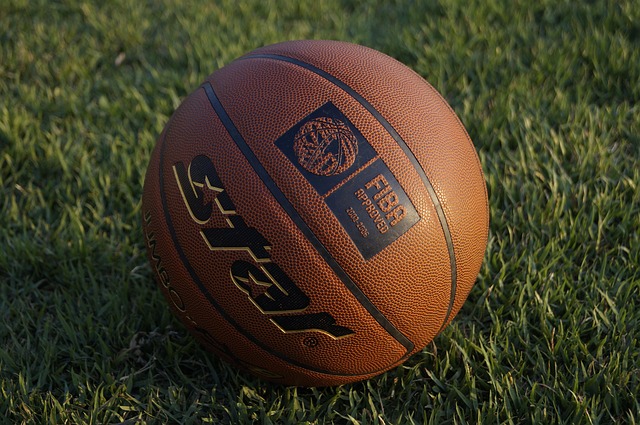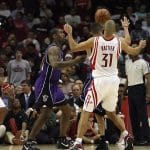If you’ve ever watched your favorite basketball player soar through the air for an alley-oop or power through the paint for a contested layup, you’ve witnessed the raw power that strength training brings to the game. The game of basketball isn’t just about skill and strategy—it’s about strength. Whether you’re sprinting up and down the court, battling in the paint, or jumping for that game-winning shot, strength is the foundation of your performance.
In this article, we’ll dive deep into basketball strength training, showing you the best strength exercises, how to build core strength, develop lower body power, and how to enhance your performance through weightlifting and resistance training. Whether you’re a guard looking to blow by defenders or a center trying to dominate the post, developing strength is the key to elevating your game. So, let’s get started!
Why Strength Matters in Basketball
Basketball is a dynamic sport that requires power, speed, agility, and coordination. But what sets the best players apart? Strength. Whether you’re driving to the basket through a crowd, setting a screen, or going up for a rebound, raw power makes a difference.
For instance, lower body strength helps you explode off the ground for jumps, while core strength stabilizes your body during those quick changes in direction and explosive movements. In fact, strength isn’t just about lifting heavy weights—it’s about building functional strength that translates directly to your on-court performance.
Just like in any other sport, basketball players rely on their muscles to generate speed, power, and endurance. Strength training helps build those muscles and enhances athletic performance. But not all strength training is the same. Let’s break down the types of strength training that will take your game to the next level.
1. Lower Body Strength for Basketball
A strong lower body is a game-changer in basketball. Whether you’re sprinting down the court or exploding into the air for a dunk, your legs and hips do most of the work. Building lower body strength helps you accelerate faster, jump higher, and resist defenders with ease.
Key Lower Body Strength Exercises:
- Squats: The king of all lower body exercises, squats are crucial for building strength in your quads, hamstrings, and glutes. These muscles are key when jumping, cutting, and sprinting. When performing squats, focus on keeping your chest up, knees behind your toes, and driving up through your heels. Aim for a full range of motion to build strength throughout the entire movement.
- Lunges: Lunges are fantastic for improving balance and unilateral leg strength. They mimic the movements you’ll make during a basketball game, such as sprinting and changing direction. Try forward, reverse, and lateral lunges to target all angles of your legs.
- Deadlifts: Deadlifts strengthen the posterior chain—your hamstrings, glutes, and lower back. These muscles are involved in jumping and explosive movements, so deadlifts help you develop the power needed for those high-flying moments.
- Box Jumps: This explosive movement simulates the jump height you’ll need in basketball. To increase vertical jump and leg power, use box jumps to develop explosiveness. Start with a lower box height and gradually increase as your strength improves.
Why It Matters:
The more power you generate from your legs, the more force you can apply in all aspects of your game. Lower body strength allows you to defend with strength, finish at the rim, and battle for rebounds with confidence.

2. Core Strength for Basketball Performance
Now, let’s talk about the engine room of your body: the core. Core strength is often overlooked, but it’s vital for every movement you make on the court. Whether you’re planting to make a shot, twisting to pass, or absorbing contact when attacking the rim, core strength stabilizes your body and allows you to make these moves with power and control.
Key Core Strength Exercises:
- Planks: Simple but effective, planks strengthen your entire core, including the muscles in your abs, obliques, and lower back. Add variations such as side planks or planks with leg lifts to challenge your stability even more.
- Russian Twists: For rotational strength (which is essential for shooting, passing, and defending), Russian twists are perfect. You can add weight to increase difficulty and target your obliques, which are key for any lateral movements.
- Medicine Ball Slams: Medicine ball slams are explosive and target your core, upper body, and legs. This exercise mimics the power you need for jumping and finishing strong in the paint. It also helps with core rotational strength, which is vital for passing and shooting.
- Cable Woodchoppers: This exercise builds rotational power and stability, crucial for shooting, pivoting, and creating space during ball-handling.
Why It Matters:
A strong core helps you maintain control and balance during all basketball movements, whether you’re absorbing contact while driving to the basket or making a quick, sharp cut. It’s the foundation for generating power in your jump shot and explosive moves.
3. Explosive Power Training for Basketball
Explosive power is the name of the game in basketball. Jumping, sprinting, and changing direction quickly are all fueled by your ability to produce explosive force. Strength training, combined with plyometric exercises, can improve your reaction time and help you perform at your peak level.
Key Explosive Power Exercises:
- Power Cleans: This Olympic lift targets your legs, back, and core. The power clean is one of the best ways to develop explosive strength, which is essential for vertical jumps and fast breaks.
- Jump Squats: Combining squats with a jump, this exercise improves lower body power and helps you increase your vertical jump. Focus on landing softly to avoid injury.
- Depth Jumps: This is an advanced plyometric exercise that builds explosive power in the legs. By jumping off a box and immediately rebounding as you hit the ground, you teach your body to react quickly and generate more power for jumps and sprints.
- Broad Jumps: Broad jumps help with horizontal explosive power, allowing you to burst forward with speed. Practice jumping as far as you can and then re-position yourself to jump again without hesitation.
Why It Matters:
The more explosive your movements are, the quicker you’ll react on the court. Whether it’s for fast breaks, jump shots, or rebounding, explosive power training is crucial for breaking away from defenders and finishing strong at the rim.
4. Weightlifting for Basketball Athletes
Weightlifting is often seen as the traditional strength training for athletes, and for good reason. It builds overall strength and muscular endurance, but when done correctly, it can also improve basketball performance.
Key Weightlifting Exercises:
- Barbell Squats: These are a classic for building lower body strength. They help develop the muscles needed for jumping, sprinting, and defending.
- Deadlifts: Another classic, deadlifts build your posterior chain, which is essential for every basketball movement, especially explosive movements like jumping and sprinting.
- Overhead Press: This builds shoulder and upper body strength, which is crucial for shooting and passing. Strong shoulders give you the power you need to finish contested shots and throw full-court passes.
Why It Matters:
Weightlifting builds strength that directly translates to on-court performance. Stronger muscles allow you to execute basketball movements with more force, helping you push past defenders, finish through contact, and hold your ground in the post.
5. Resistance Training Techniques
Resistance training focuses on improving the strength of muscles by using external resistance. Whether through bands, weights, or machines, resistance training builds functional strength and muscle endurance, helping you perform better during games.
Key Resistance Training Exercises:
- Resistance Band Sprints: Attach a resistance band to your waist and have a partner hold the other end. Sprint against the resistance, mimicking a fast-break or full-court sprint.
- Banded Squats: Adding resistance bands to your squat movements enhances the challenge to your legs and hips, building power for vertical jumps and defensive slides.
- Pull-ups and Chin-ups: These exercises strengthen your upper body and help with finishing at the rim through contact.
Why It Matters:
Resistance training helps develop the muscle groups you rely on for endurance, power, and speed during the game. Whether you’re sprinting, jumping, or boxing out, resistance training builds the strength you need to do it better.
Conclusion: Build Strength for a Better Game
Basketball is a game of power, speed, and endurance. The more strength you build through proper training, the better you’ll perform on the court. Whether it’s through lower body strength, core stability, or explosive power, strength training is the foundation of your basketball success.
The best players combine weightlifting, plyometric exercises, and resistance training to dominate the court. By focusing on functional strength, you can improve your jumping ability, sprinting speed, and overall basketball performance. So, hit the gym, get stronger, and get ready to take your game to the next level! Dominating the court starts with building power, and strength training is
your ticket to success!



